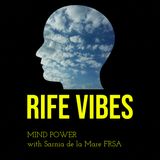“The Science of Being Well” by Wallace D. Wattles is a practical guide that explores the principles of health and well-being. Here are the key points from the book:
Preface:
- The book is part of a series, with the first book being “The Science of Getting Rich.”
- Unlike philosophical treatises, this book provides practical guidance for achieving health.
- It aims to explain the way to perfect health in a plain and simple fashion, accessible even to those new to New Thought or metaphysics.
Monistic Theory of the Universe:
- The book operates from the perspective of the monistic theory—the idea that matter, mind, consciousness, and life are all manifestations of one universal Substance.
- If you accept this theory, the logical conclusions presented in the book become undeniable.
Tested Methods:
- The author, Wallace D. Wattles, has tested the methods of thought and action prescribed in the book.
- These methods have been successful in his own case and in the cases of hundreds of others over twelve years of practice.
Essential Topics Covered:
- The Principle of Health: Understanding the fundamental principles underlying well-being.
- Foundation of Faith: How faith influences health.
- Life and Its Organisms: Insights into life processes.
- What to Think: The power of positive thinking.
- Use of the Will: Harnessing your willpower.
- Health from God: Connecting health to spiritual aspects.
- Nutrition and Eating Habits: When to eat, what to eat, and how to eat.
- Breathing and Sleep: Vital aspects of well-being.
Practical Application:
- The book emphasizes practical application over abstract theories.
- It provides actionable steps for readers to follow in their pursuit of health.
In summary, “The Science of Being Well” offers a straightforward approach to achieving optimal health based on tested principles. If you follow the prescribed methods, you can experience positive results. 🌿🌟
You can find the full text of the book on Project Gutenberg1.
Certainly! Let’s compare “The Science of Being Well” by Wallace D. Wattles with modern health advice:
“The Science of Being Well”:
- Focus: The book emphasizes principles of health and well-being.
- Approach: It operates from a monistic theory that considers matter, mind, consciousness, and life as manifestations of one universal Substance.
- Content: It covers topics like the principle of health, faith, relationships, thinking patterns, sleep, and nutrition.
- Application: Practical methods for achieving health are provided.
Modern Health Advice:
- Evidence-Based Practices: Modern health advice is rooted in scientific research and evidence.
- Holistic Approach: It emphasizes overall health rather than just the absence of disease.
- Key Areas:
- Mental Health: Strategies for well-being, mindfulness, and stress reduction1.
- Healthy Aging: Research-backed tips for maintaining health throughout life2.
- Behavior Change: Encourages positive lifestyle changes (e.g., diet, exercise, sleep)3.
- Kindness and Happiness: Focuses on inner strength, happiness, and mindfulness4.
Common Themes:
- Both emphasize the importance of relationships, basic self-care (like sleep and gratitude), and mental well-being.
- Both recognize that health extends beyond physical symptoms.
In summary, while “The Science of Being Well” provides timeless principles, modern health advice integrates evidence-based practices, holistic approaches, and a focus on mental well-being. Combining both can lead to a comprehensive approach to health! 🌿🌟
Balancing ancient wisdom with modern insights can lead to a holistic approach for better well-being. Let’s explore how you can integrate both:
Mindfulness and Meditation:
- Ancient Wisdom: Practices like meditation, yoga, and tai chi have been used for centuries to cultivate mental clarity, reduce stress, and enhance overall health.
- Modern Insight: Scientific research confirms the benefits of mindfulness. Regular meditation improves focus, reduces anxiety, and positively impacts brain health.
Nutrition:
- Ancient Wisdom: Traditional diets often emphasize whole foods, seasonal eating, and mindful consumption.
- Modern Insight: Evidence-based nutrition science guides us toward balanced diets rich in fruits, vegetables, whole grains, and lean proteins. Avoid processed foods and excessive sugar.
Physical Activity:
- Ancient Wisdom: Ancient cultures engaged in physical activities like walking, dancing, and manual labor.
- Modern Insight: Regular exercise is crucial for cardiovascular health, muscle strength, and mental well-being. Find an activity you enjoy and make it a habit.
Sleep Hygiene:
- Ancient Wisdom: Respect natural sleep cycles and create a calming bedtime routine.
- Modern Insight: Prioritize sleep quality and consistency. Maintain a regular sleep schedule, limit screen time before bed, and create a comfortable sleep environment.
Community and Social Connections:
- Ancient Wisdom: Communities played a central role in ancient societies.
- Modern Insight: Strong social connections are linked to better mental health, longevity, and resilience. Cultivate meaningful relationships and engage in social activities.
Emotional Well-Being:
- Ancient Wisdom: Practices like gratitude, forgiveness, and compassion promote emotional balance.
- Modern Insight: Techniques like cognitive-behavioral therapy (CBT) help manage emotions and build resilience. Seek professional help when needed.
Environmental Awareness:
- Ancient Wisdom: Ancient cultures revered nature and understood its healing power.
- Modern Insight: Spend time in green spaces, practice eco-friendly habits, and connect with nature for mental and physical health.
Continuous Learning:
- Ancient Wisdom: Lifelong learning was valued in ancient civilizations.
- Modern Insight: Stay curious! Read, explore new hobbies, and engage in intellectual pursuits. Learning keeps the mind active and adaptable.
Remember, wisdom transcends time. Blend ancient practices with modern knowledge, adapt them to your lifestyle, and create a personalized path toward well-being. 🌿🌟



